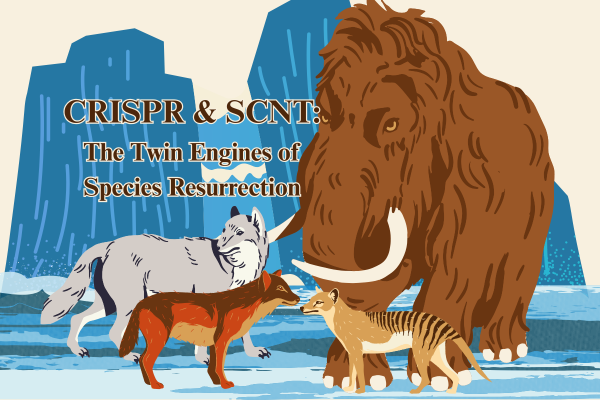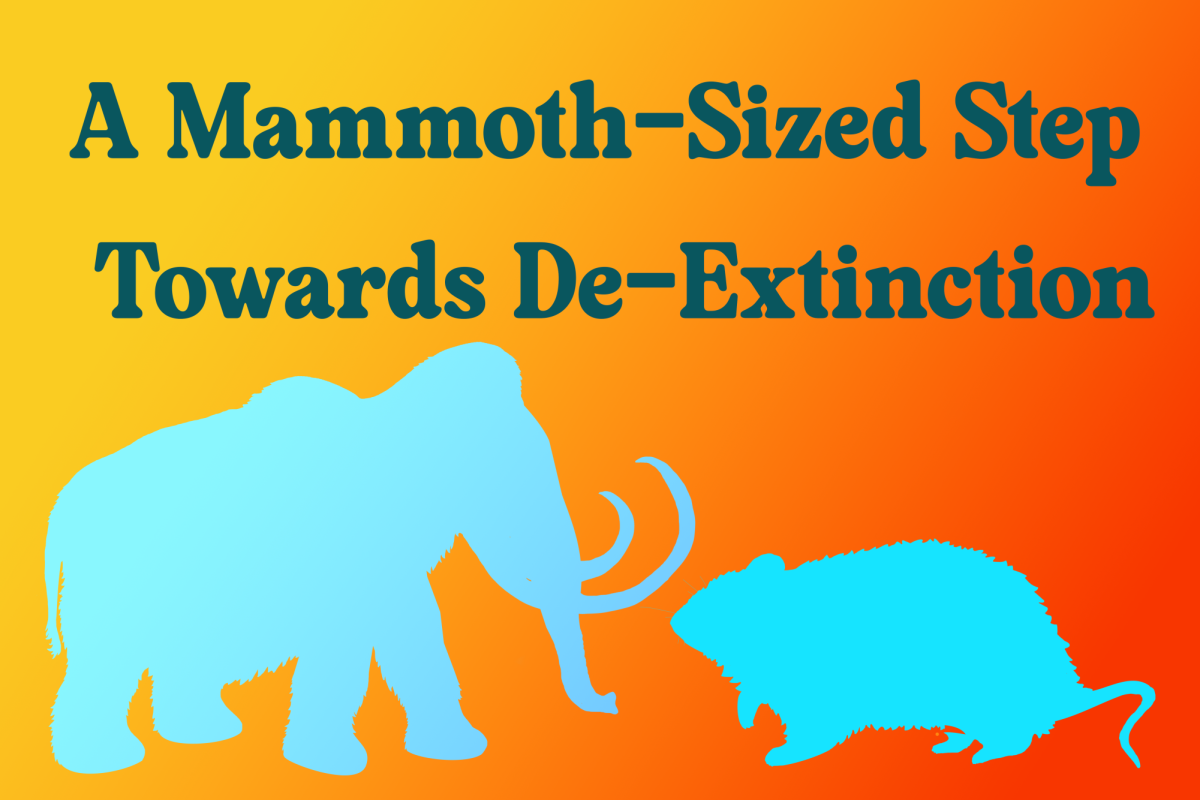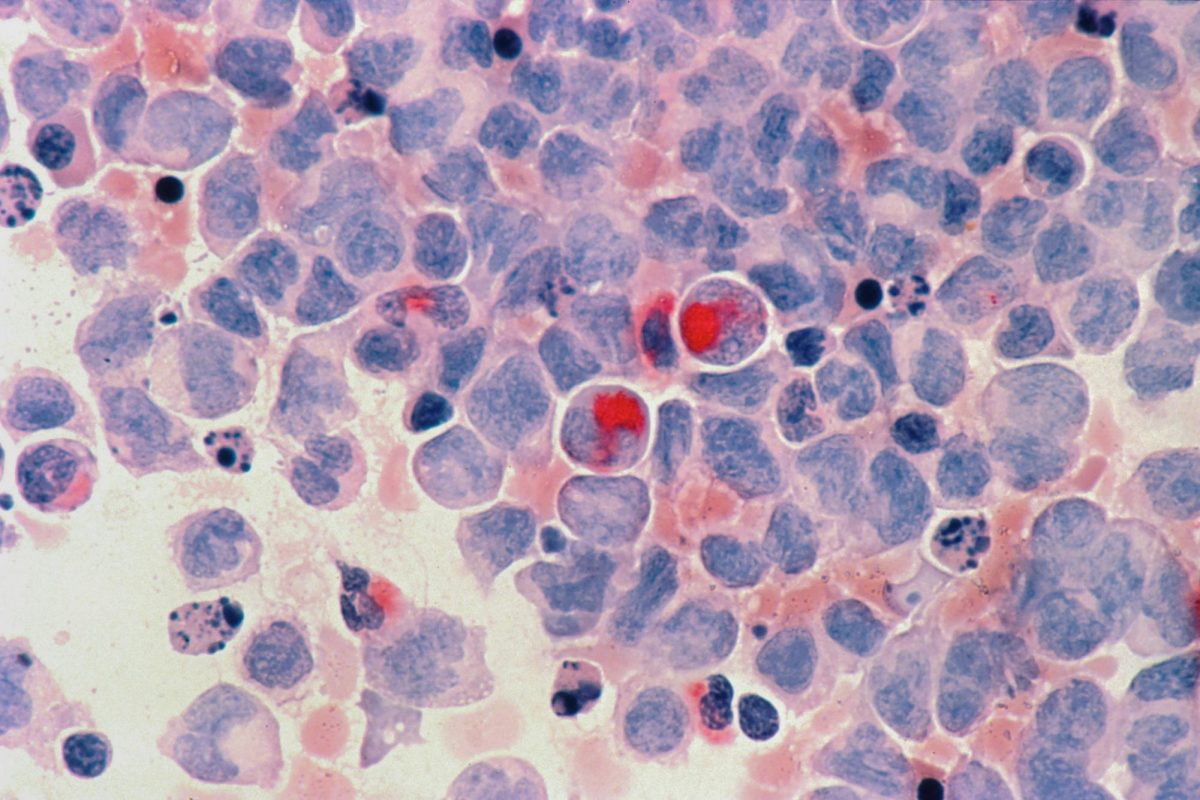De-extinction, the process of resurrecting extinct species, has recently become prevalent in the scientific world. Reintroducing extinct keystone species could help stabilize ecosystems, promoting the essential balance between predator, prey, and the environment. De-extinction efforts, such as those for the woolly mammoth, thylacine, and dire wolf, seek to restore these species and rebuild ecosystem functions.
CRISPR-Cas9
CRISPR-Cas9 (short for “clustered regularly interspaced short palindromic repeats,” plus the Cas9 enzyme) is a gene editing technique originally discovered in single-cell bacterial organisms, acting as a natural immune system. The bacteria’s natural response to a virus is to capture and sequence DNA from the virus to act as “memory,” so that the next time the cell is attacked, it is able to recognize and destroy the infection. Scientists have modified this natural process for gene editing, developing a “guide” RNA (ribonucleic acid which carries genetic information) to direct the Cas9 enzyme (which introduces a double-stranded break) to where the DNA sequence is to be edited.
CRISPR is central to de-extinction and rewilding efforts. By editing the genes of closely related species, scientists can reintroduce extinct species’ traits (through sequenced DNA) into the genome of the living relatives. For example, traits from the woolly mammoth, such as long hair, can be sequenced and inserted into an Asian elephant’s genome.
SCNT Cloning
Cloning is the process of creating genetically identical organisms. There are different types of cloning, but the most relevant to de-extinction is somatic cell nuclear transfer, or SCNT(somatic cell nuclear transfer)–the same method used to clone Dolly the sheep. Cloning is especially useful in a de-extinction context, as it can be used even when natural reproduction is not possible due to extinction or the lack of viable breeding pairs.
The SCNT process is essentially just swapping the nuclei (the part of the cell that contains genetic information) in cells from living to extinct species. A somatic cell (non-reproductive) is taken from the extinct organism to be cloned, and an enucleated (nucleus removed) egg cell is taken from a living female of a closely related species. The nucleus from the somatic cell is inserted into the enucleated egg cell, which is then stimulated (either electrically or chemically) to begin developing into an embryo. After a short period of growth in a laboratory, it is then implanted into a surrogate mother of a related species.
The hope is that by combining SCNT with CRISPR, a viable embryo of the extinct species can be created. Through CRISPR, scientists can incorporate beneficial traits for contemporary environments through gene editing. SCNT provides the reproductive half of this process–for instance, scientists can take preserved cells from a woolly mammoth, insert genes to help it survive a changing climate, and insert it into an Asian elephant’s enucleated egg cell, thus effectively creating a woolly mammoth embryo.
The Role of Key Species and De-extinction in Ecosystem Restoration
Keystone species like the woolly mammoth, thylacine, dire wolf, and red wolf play a vital role in maintaining ecological balance. Large herbivores, like the woolly mammoth, maintained the Mammoth Steppe, one of the largest carbon sinks; their loss has led to thawing permafrost, and subsequently, the release of carbon into the atmosphere. Apex predators play a key role in regulating herbivore populations, effectively preventing overgrazing and disease spread. By bringing back these key species, ecological functions and damaged environments could be restored.
The Woolly Mammoth
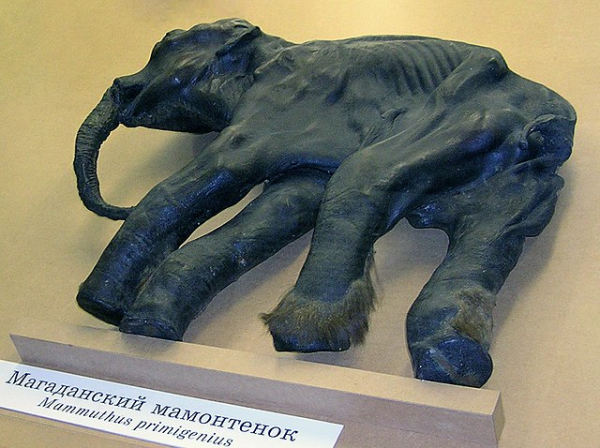
The woolly mammoth helped maintain important tundra ecosystems, like the Mammoth Steppe, through maintaining vegetation and tamping down snow, helping to preserve permafrost, which absorbs carbon. The loss of this key species greatly disrupted these ecosystems, contributing to climate change through the release of trapped greenhouse gases and has stripped this ecosystem of the grasslands that once efficiently absorbed carbon. If the mammoth steppe ecosystem were to be revived, it could help in reversing climate change.
Woolly Mammoth De-Extinction Efforts
Scientists have sequenced the woolly mammoth genome, highlighting mammoth-specific genes (like variable metabolism rates and larger tusks), comparing it with the genome of the Asian elephant, to identify genes key for survival in a cold environment. The Asian elephant is the woolly mammoth’s closest living relative, sharing a 99.6% similar DNA makeup. CRISPR is then used to close that .4% gap between these genomes, creating what is essentially a proxy woolly mammoth, adapted to survive our modern climate.
The Thylacine (Tasmanian Tiger)
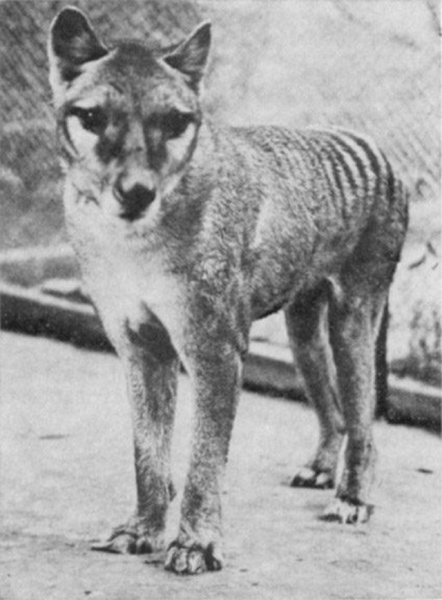
As an apex predator, the thylacine played a critical role in regulating Australia’s herbivore population. When the last wild thylacine was killed between 1910 and 1920, the lack of population control allowed new diseases to spread, specifically the Tasmanian Devil facial tumor disease.
The thylacine is a testament to the effects of human hunting. The species was hunted to extinction by European settlers, due to its nature as a carnivore, feeding on livestock. Categorized as a “pest animal”, a bounty was placed on the thylacine, leading to more intense hunting efforts. As the thylacine’s numbers dwindled, the species quickly went extinct in the wild, and finally went completely extinct when the last captive thylacine died in September of 1936.
De-Extinction Efforts for the Thylacine
The thylacine genome was first sequenced in 2018, taken from a specimen preserved for over 100 years. Surprisingly, there are plenty of remaining thylacine specimens, allowing scientists to collect complete genomes easily. Through CRISPR, scientists can introduce thylacine-specific genes into the fat-tailed dunnart, the thylacine’s closest living relative, serving as surrogates for gestation. The ultimate goal is to reintroduce the thylacine and restore its role in the environment.
The Dire Wolf

(Wikimedia Commons)
As an apex predator, the dire wolf played a critical role in controlling Pleistocene-era herbivore populations, therefore maintaining the ecosystem. After the species’ extinction, its ecological role was somewhat filled by other predators, but the species’ absence left gaps, particularly in its ability to manage populations of large herbivores.
Colossal Biosciences, an American genetic and bioengineering company, released the news that they had resurrected the dire wolf in early April. While not “true” dire wolves, these wolves share the same characteristics that helped them survive hundreds of thousands of years ago. To recreate the species, their genome was sequenced from preserved material–an ear bone and a tooth–which allowed researchers to isolate the genes differentiating it from modern wolves. CRISPR was used to insert the dire wolf’s genes into the gray wolf’s genome, and SCNT was used to produce an embryo, which was then inserted into surrogate domestic dogs. The process, successfully carried out three times, brought Romulus, Remus, and Khaleesi.
Rewilding Potential
While Colossal has announced that the three wolves will not be released into the wild, rather housing them in a preserve, the hope is that the opportunity to study them will give rise to new developments in de-extinction technology.
The Red Wolf
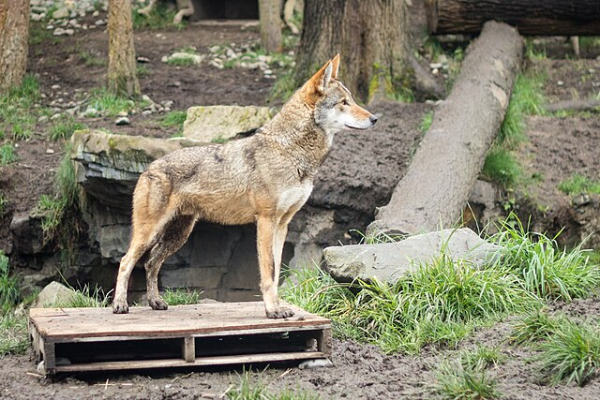
The red wolf is a critically endangered apex predator native to the southeast United States. As of today, the only known wild population is located in eastern North Carolina, with a population of just around 20 individuals. As apex predators, red wolves are key to balancing the ecosystem–they help limit populations of small mammals, which in turn prevents the spread of disease and helps support vegetation, and their leftover kills help support scavenger populations.
Along the Gulf Coast of Louisiana and Texas, a population of wild canids, coyote–red wolf hybrids, nicknamed “ghost wolves,” was discovered. Retaining a significant portion of red wolf genes, with traits like red fur and longer legs, the ghost wolves help preserve biodiversity that has been lost from captive populations.
Conservation Efforts for the Red Wolf
The red wolf serves as a modern example of the use of de-extinction technology for “genetic rescue.” These “ghost wolves” would introduce unique genomes to the limited captive red wolf populations, helping to preserve the genetic integrity of the red wolf and maintain a genetically viable population. Reintroduction of the red wolf into its historic habitat has potential in the future; however, hybridization with coyotes and human-wildlife conflict remains a challenge. Building up a population in captivity is the most practical approach to reintroduction, especially when combined with genetic research and tracking.


